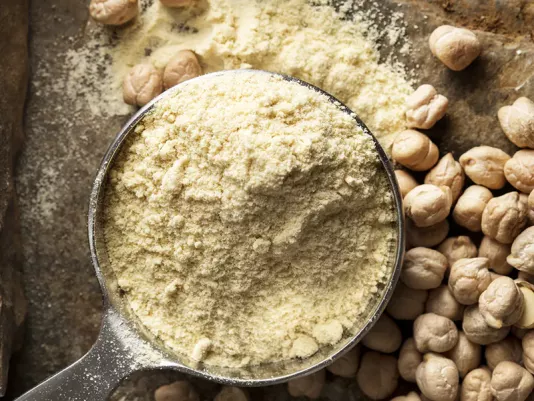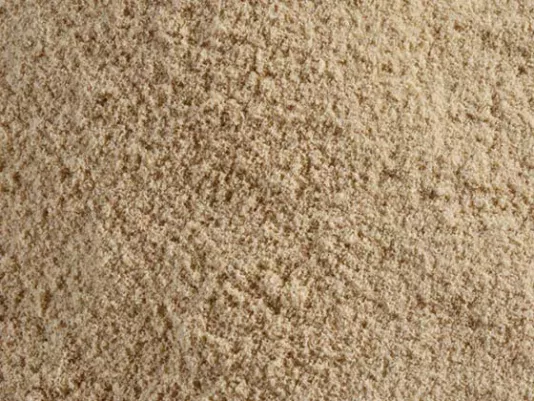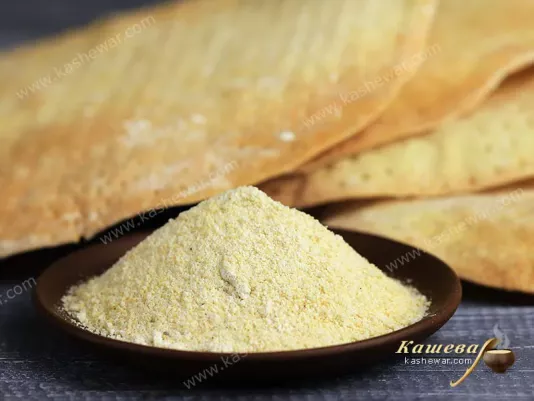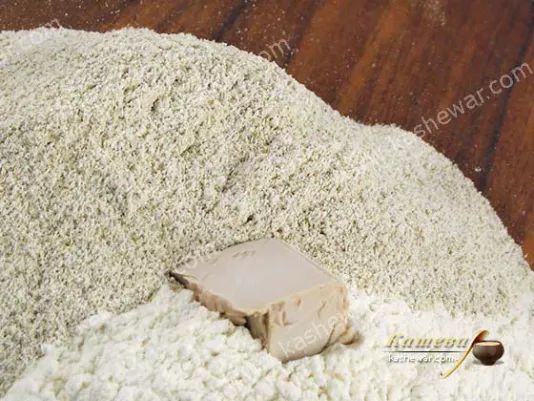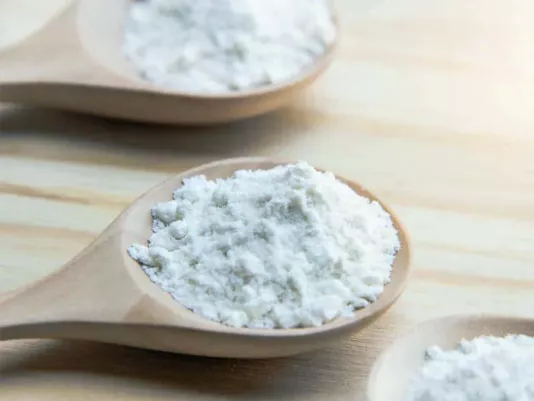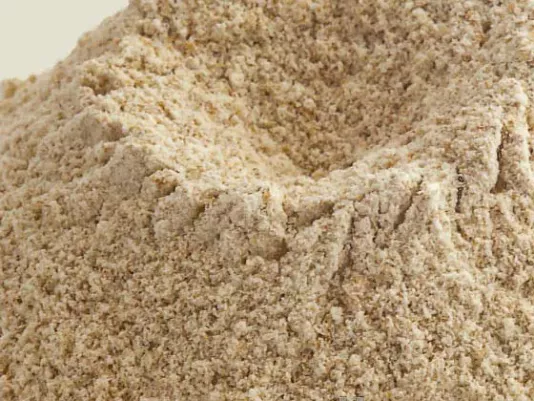Flour
Flour for me is the basis of culinary creativity, because it opens up the most opportunities for experimentation. I bake bread, pies, pancakes, cookies, and hundreds of other dishes with it, and each time the result depends on which flour I choose. I use wheat flour for delicate pastries, rye for hearty and aromatic breads, corn for golden pancakes and porridges. I like trying modern options such as chickpea, rice, or almond flour, as they add new flavor notes and make the menu healthier. It is important for me to understand the properties of each type, since both the texture of the dough and the final result depend on it. For me, flour is more than just an ingredient – it is a real tool that allows me to bring culinary ideas to life.
Different Types of Flour
Wheat Flour in Baking
Wheat flour has always been the basis of most recipes for me, since it was with it that I began my first culinary attempts. I use it for bread, pies, cakes, cookies, and pancakes, and I am always amazed at how different the result can be depending on the type and grind. Premium flour is suitable for delicate and fluffy pastries, where light texture is important, while coarser flour gives a richer taste and makes dishes healthier. When I prepare dough for bread, I always combine wheat flour with rye or whole grain to achieve a more pronounced aroma and denser structure. In pastries and cakes, I use flour with a higher gluten content, as it holds its shape better and allows me to create airy desserts. I like to experiment with substitutions: sometimes I replace part of the wheat flour with other types to make the dish more interesting. But wheat flour remains the main one for me, as it always guarantees a stable result. I love that with it I can create both simple homemade pastries and complex culinary masterpieces. That is why wheat flour is for me an irreplaceable ingredient without which I cannot imagine my kitchen.
Rye Flour and Its Features
I discovered rye flour when I wanted to diversify my baking and give it a richer taste. Its dark color and pronounced aroma make bread special, distinguishing it from the usual wheat. I often bake rye bread at home, adding spices, seeds, or honey, and each time it turns out to be something new and interesting. Rye flour has a denser structure, so dough with it is heavier, but that is exactly what gives the baking its character. I use it not only for bread but also for pancakes, gingerbread, or even cookies – the dishes turn out more aromatic and nutritious. I like to combine rye flour with wheat to balance texture and taste. Another advantage for me is its benefits: rye flour contains more fiber and minerals, so dishes with it are more filling and healthier. When I bake with rye flour, I always pay attention to the ratio of liquid, since it absorbs more moisture. This allows me to experiment by creating more moist and dense baked goods. For me, rye flour is an ingredient that gives dishes depth, making them truly homemade and authentic.
Corn Flour in My Recipes
Corn flour has become an ingredient that adds brightness and variety to my menu. Its golden color and light sweet flavor make dishes appetizing and special. I often use it to make pancakes and flatbreads, as they turn out fluffy with a delicate texture and pleasant aroma. In baking, corn flour creates crumbliness, so I like to add it to dough for cookies or muffins. It is also excellent for breading: meat or fish in such a coating becomes golden and crispy. I like that corn flour can be combined with wheat, creating a balance between tenderness and crispiness. I also make porridges and creamy dishes with it, which have a rich taste and are very satisfying. When I use corn flour, I always pay attention to its grind: fine gives a more delicate texture, while coarse provides a more pronounced one. For me, this flour has become an excellent tool for experiments, as it is suitable for both simple everyday meals and festive treats. Corn flour always gives recipes a sunny color and a unique character.
Unconventional Types of Flour
In recent years, I have increasingly used unconventional types of flour, as they allow me to create new flavors and make dishes healthier. Chickpea flour has become a real find for me: I add it to pancake or fritter batter, and they turn out more nutritious and aromatic. I like to use rice flour in gluten-free baking – cookies or flatbreads with it have a delicate texture and are suitable for the whole family. I add almond flour to desserts: it makes the dough crumbly, fragrant, and gives it a special taste. I have also tried using coconut flour, and it has become one of my favorites for making sweet pastries or energy bars. Such unconventional types of flour open up wide possibilities for experiments, as each has its own taste and properties. I often combine them with wheat or corn flour to preserve the right dough structure but add new notes to the dishes. For me, these types of flour are an example of how familiar recipes can be turned into something completely new and interesting. They make my menu diverse, modern, and healthier.
How I Choose and Store Flour
When I choose flour, I always pay attention to its freshness and quality. It should have a pleasant neutral smell, without impurities or signs of moisture. I never buy flour with lumps or a strong odor, as this indicates improper storage. It is also important for me to check the expiration date and product origin: fresh flour always gives the best result in baking. At home, I store it in glass or metal containers with tight lids to protect it from moisture and pests. I am especially careful with unconventional types of flour, as they spoil faster – I always keep them in the refrigerator. I prefer to buy flour in small batches to use it as fresh as possible. Before baking, I often sift the flour: this helps to aerate it and make the dough more delicate. Such simple steps always give me confidence that baking or any other dish will turn out successful. For me, the right choice and storage of flour is the foundation of success in the kitchen, because the taste and quality of my favorite recipes depend on it.
